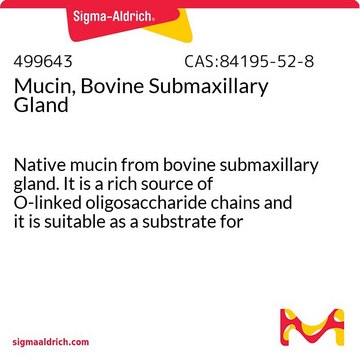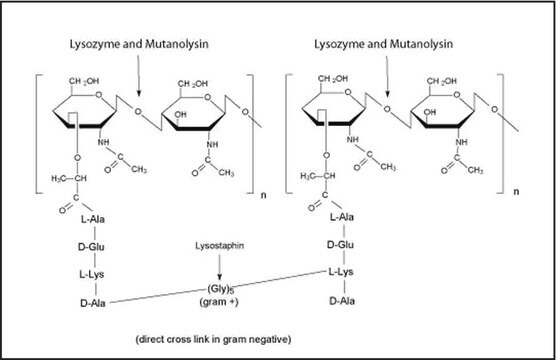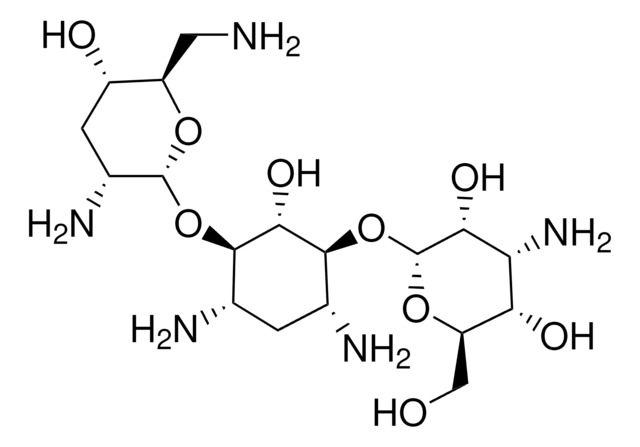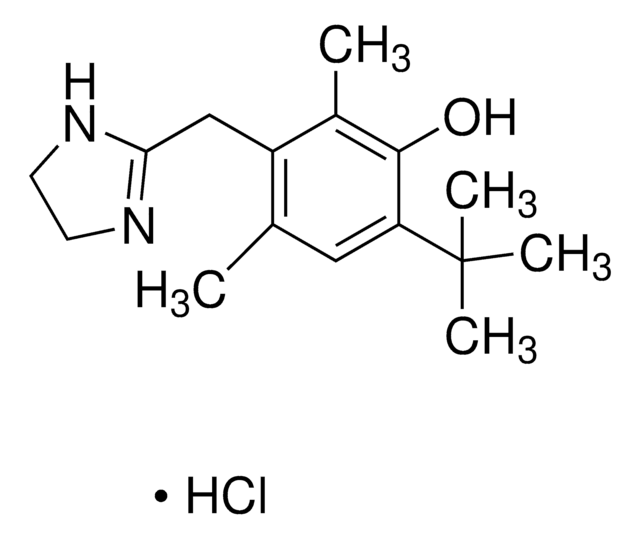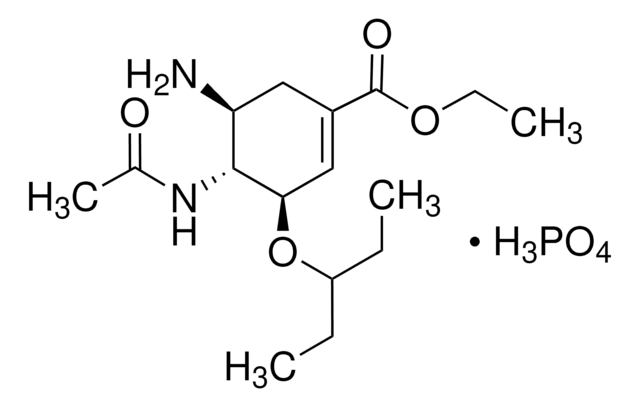M3895
Mucin from bovine submaxillary glands
Type I-S
Synonym(s):
MUC
Sign Into View Organizational & Contract Pricing
All Photos(4)
About This Item
Recommended Products
biological source
bovine submaxillary glands
Quality Level
type
Type I-S
form
powder
composition
Bound sialic acids, 9-24%
technique(s)
electrophoresis: suitable
UniProt accession no.
storage temp.
−20°C
Gene Information
cow ... BSM(286841)
Looking for similar products? Visit Product Comparison Guide
Related Categories
General description
Mucin from bovine submaxillary glands is encoded by two bovine submaxillary BSM genes. It is present in the saliva and interacts with air and food. Mucin comprises three major domains namely N- and C terminal and the glycosylated proline, threonine and serine (PTS domain) central domain. The sialic acid contributes to 30% of the molecular weight of mucin. The central domain has many tandem repeats.
Application
Mucin from bovine submaxillary glands has been used:
- in the quantification of mucin
- as a component of artificial tear solution
- as a substrate for recombinant sialidase Gardnerella vaginalis
- to investigate a galactose-specific lectin from the red marine alga Ptilota filicina
- to study the characterization of a unique mucin-like glycoprotein secreted by a human endometrial adenocarcinoma cell line (Ishikawa)
Biochem/physiol Actions
Bovine submaxillary mucin (BSM) is thermally stable up to 85°C. The terminal domain regions are key for the adsorption functionality of mucin.
Albuminoid substance in mucus which gives it its ropy consistency
Linkage
Similar to M 4503, but produced by Sigma.
Substrates
Neuraminidase substrate.
Storage Class Code
11 - Combustible Solids
WGK
WGK 3
Flash Point(F)
Not applicable
Flash Point(C)
Not applicable
Personal Protective Equipment
dust mask type N95 (US), Eyeshields, Gloves
Certificates of Analysis (COA)
Search for Certificates of Analysis (COA) by entering the products Lot/Batch Number. Lot and Batch Numbers can be found on a product’s label following the words ‘Lot’ or ‘Batch’.
Already Own This Product?
Find documentation for the products that you have recently purchased in the Document Library.
Customers Also Viewed
Identification and characterization of NanH2 and NanH3, enzymes responsible for sialidase activity in the vaginal bacterium Gardnerella vaginalis
Robinson LS, et al.
Test, 294(14), 5230-5245 (2019)
Late therapeutic intervention with a respiratory syncytial virus L-protein polymerase inhibitor, PC786, on respiratory syncytial virus infection in human airway epithelium
Brookes DM, et al.
British Journal of Pharmacology, 175(12), 2520-2534 (2018)
Sasi B Yarragudi et al.
Carbohydrate polymers, 163, 216-226 (2017-03-08)
Targeted delivery and retention of drug formulations in the olfactory mucosa, the target site for nose-to-brain drug absorption is a major challenge due to the geometrical complexity of the nose and nasal clearance. Recent modelling data indicates that 10μm-sized microparticles
S Goswami et al.
Experimental lung research, 20(1), 85-100 (1994-01-01)
A human endometrial adenocarcinoma cell line (Ishikawa) has been shown to incorporate [3H]glucosamine and to secrete a radiolabeled high molecular weight compound which is excluded from a Sepharose CL-2B column. The excluded material was resistant to hyaluronidase, chondroitinase ABC, and
Instability and breakup of model tear films
Bhamla MS, et al.
Investigative Ophthalmology & Visual Science, 57(3), 949-958 (2016)
Our team of scientists has experience in all areas of research including Life Science, Material Science, Chemical Synthesis, Chromatography, Analytical and many others.
Contact Technical Service

